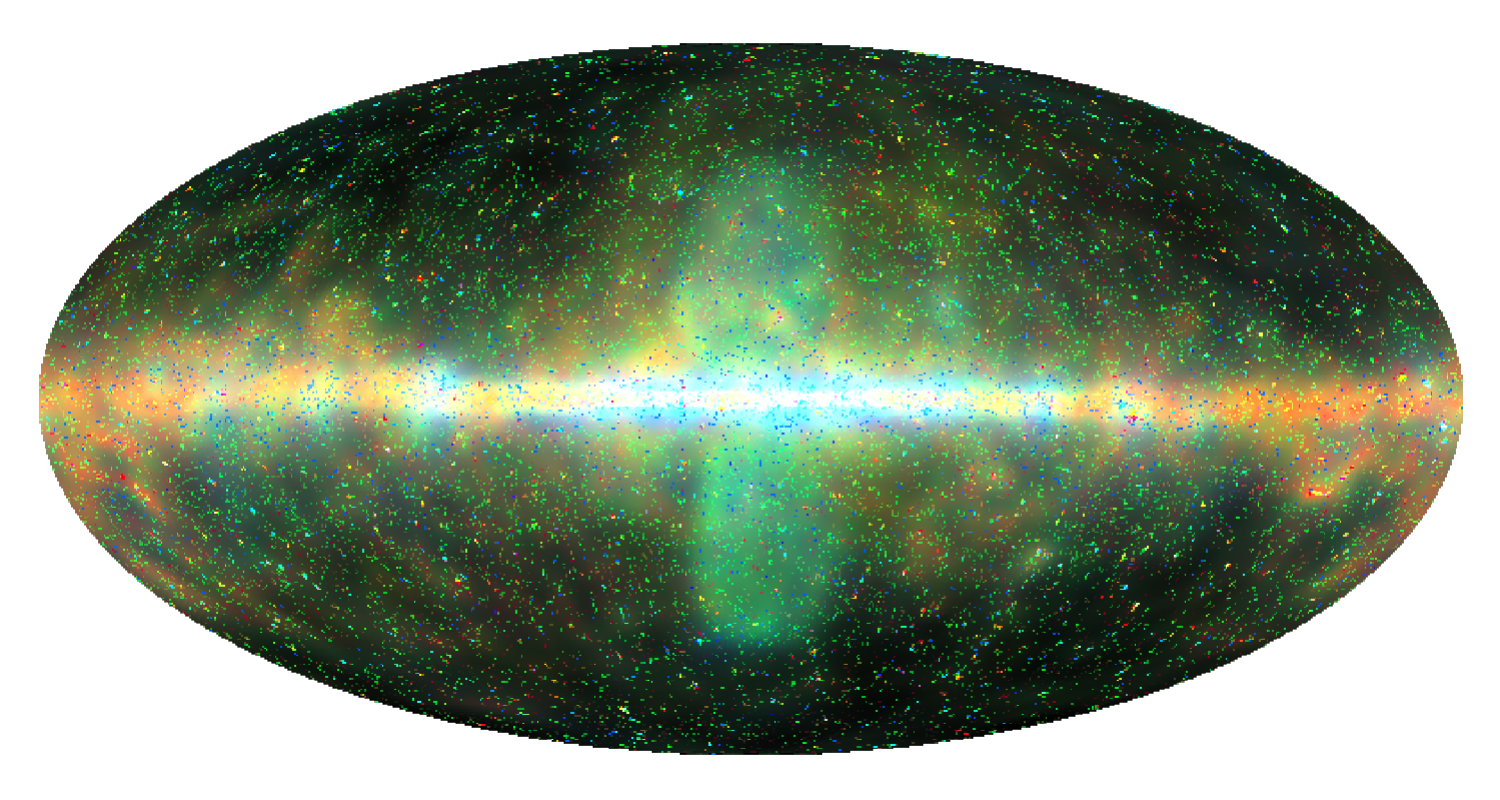
High Energy Astrophysics
The Universe is permeated by high-energy particles and magnetic fields. Charged particles with nearly the speed of light spiraling around in the magnetic fields, which themselves are bound to the cosmic plasma. The particles and fields are important ingredients of the interstellar and intergalactic media. They transport energy, they push and heat the thermal gas, and they trace violent processes in cosmic plasmas. A number of observational windows in basically all electromagnetic wavebands, ranging from the radio to the gamma ray regime, provide us with direct and indirect vision into the high energy Universe. The IFT group develops special purpose methods to better imagine relativisitc particles, magnetic fields, and even to tomographically reconstruct their distributions within the Milkey Way.
Highlights
Inner view of the Milky Way’s magnetic field shows spiral structure
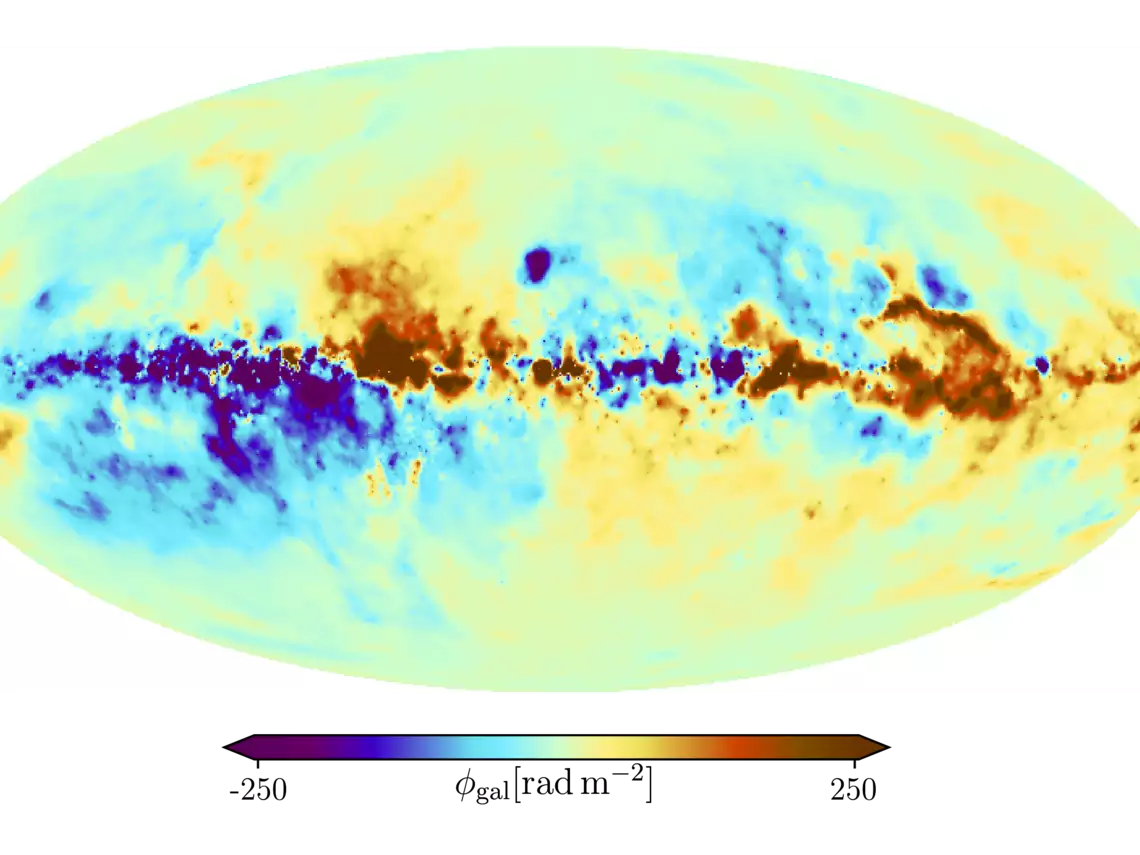
Magnetic fields of spiral galaxies usually show spiral structures themselves. For our own galaxy, this could not be confirmed so far due to our unfavorable inner perspective. Researchers at the Max Planck Institute for Astrophysics have now shown that the local galactic magnetic field is indeed aligned with the local Orion spiral arm of the Milky Way, as expected for a spiral galaxy.
- Learn more
- Learn more
Black hole as video: M87* in time, space and frequency
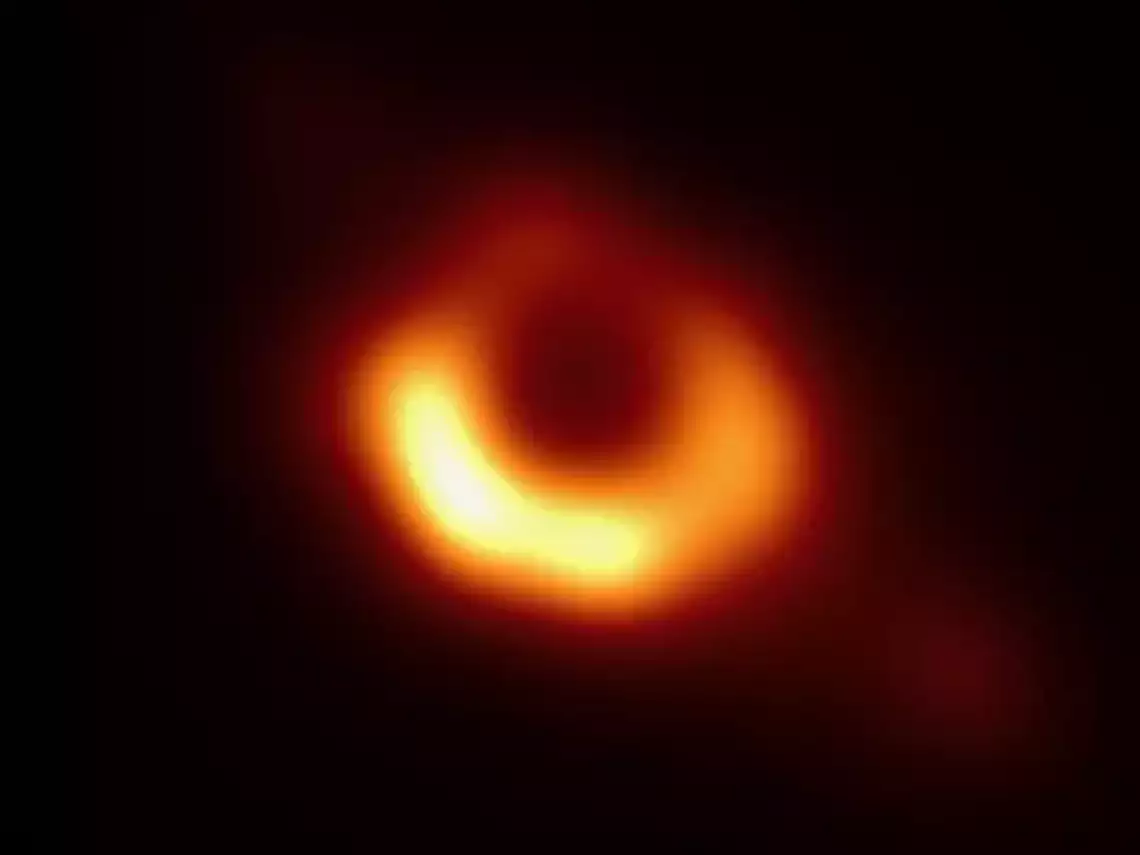
In April 2017 the Event Horizon Telescope (EHT) observed the super-massive black hole M87* and provided a first image of its shadow that went around the world. Researchers at the Max Planck Institute for Astrophysics have now reconstructed a video of the immediate surroundings of a black hole from the same underlying data. This not only confirms previous findings, video of the immediate surroundings of a black hole from the same underlying data. This not only confirms previous findings, it also hints at new structures and dynamics in the gas disk around the black hole.
Of harps, Christmas trees, a wandering star and the mysterious streams of cosmic rays
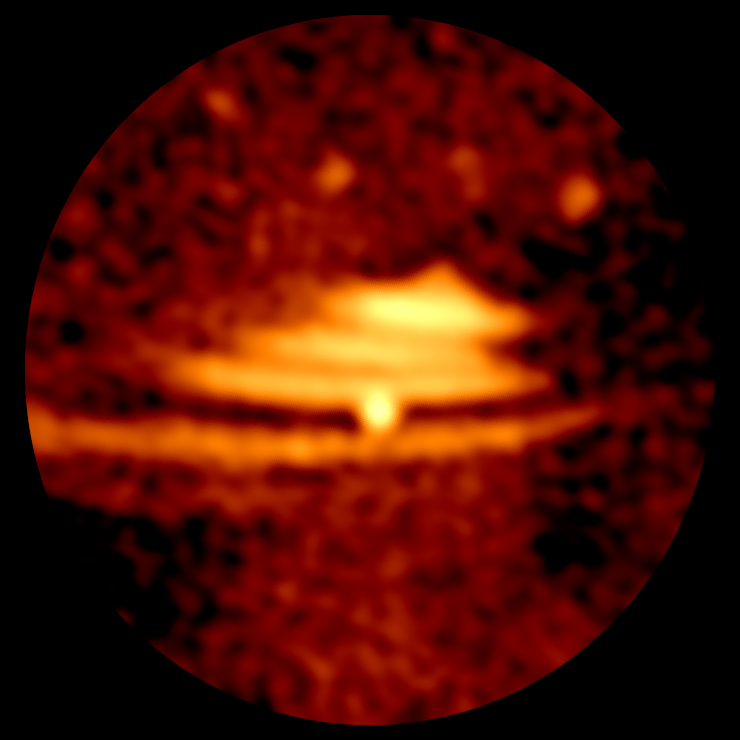
Researchers at the Leibniz Institute for Astrophysics in Potsdam (AIP), and the Max Planck Institute for Astrophysics in Garching (MPA), have investigated galactic radio objects that adopt shapes such as Christmas trees and harps. They were able to answer the old question of the transport of cosmic rays.
LOFAR radio observations document rejuvenation in space
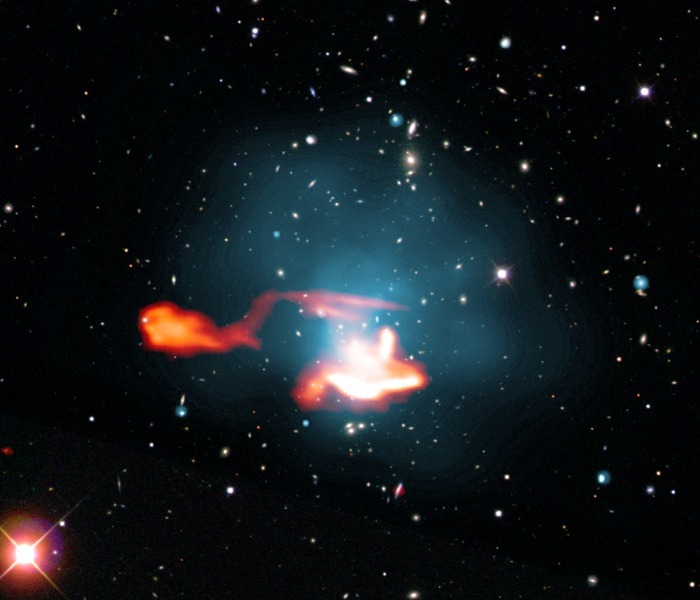
In observations of galaxy clusters, astronomers in collaboration with the MPA discovered a new class of cosmic radio sources. With the digital radio telescope Low Frequency Array (LOFAR) they received the longest radio waves that can be measured on Earth. They identified a remarkable "tail"behind a galaxy in the radio light, which must have been re-energized after it had faded away. In the journal Science Advances, the team describes this discovery, which either confirms a theoretical prediction on the interaction between shock waves and radio plasma or represents a novel phenomenon.
Wanted: the rotating radio emission of the Milky Way
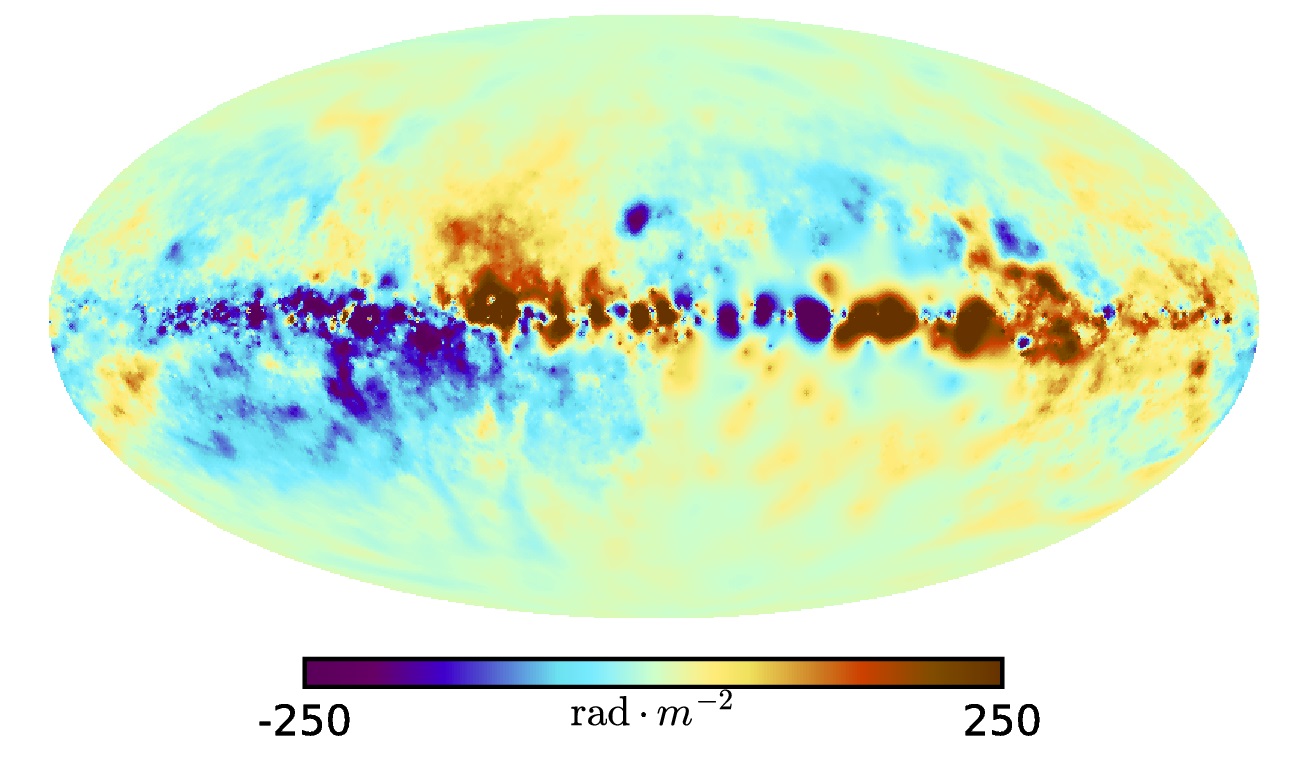
The magnetic fields of the Milky Way cause electrons with nearly the speed of light to rotate and to emit radio waves. As consequence, this radiation should also "rotate" in some way, i.e. the polarization of the radiation will change. This very weak circular polarization of the Milky Way, however, has not been observed so far. Researchers at the Max Planck Institute for Astrophysics and colleagues have now predicted some properties of this polarization and created a "wanted poster" to allow targeted searches. A measurement of the circular polarization would provide important insights into the structure of the galactic magnetic fields and confirm that electrons - and not positrons - are the source of this radio emission in the Milky Way.
Galactic anatomy of gamma rays
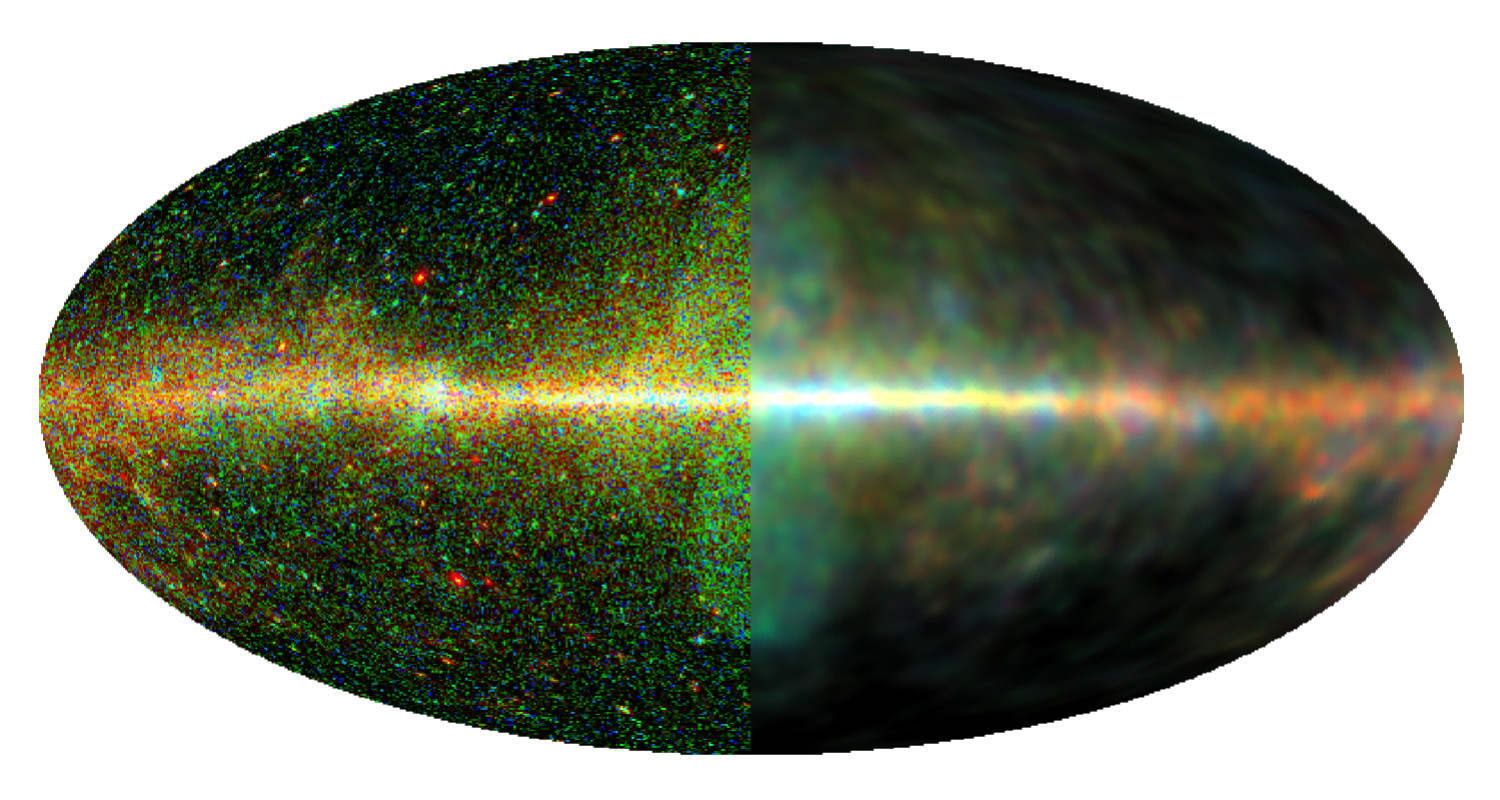
The anatomy of the Milky Way as seen in gamma light is full of mysteries. For example, there are gigantic bubbles of unknown origin above and below the center of the Milky Way that emit a lot of this high-energy radiation. A new method for imaging, developed at the Max Planck Institute for Astrophysics, now divided the Galactic gamma-radiation into three fundamental components: radiation from point sources, radiation from reactions of energetic protons with dense cold gas clouds, and radiation from electrons scattering light in the thin, hot, Galactic gas. The anatomic insights gained unravel some Galactic mysteries. Thus, it appears that the gamma-ray bubbles are simply outflows of ordinary, hot gas from the central region of the Milky Way.
Faraday caustics: Light patterns from cosmic magnetism

Similar to the light pattern at the bottom of a swimming pool on a sunny day, recent work by scientists at the Max Planck Institute for Astrophysics predicts that future images of cosmic magnetic fields will contain networks of bright structures. These structures should play a key role in the three-dimensional cartography of galactic magnetic fields, such as the one permeating the turbulent plasma in the Milky Way. Studying these in detail has been difficult in the past but will strongly benefit from the new generation of radio telescopes which permit 3-dimensional mapping of magnetic structures. The MPA scientists have now predicted that among the first structures to be seen by this novel method will be bright sheets of polarized emission, which they named 'Faraday caustics'. These Faraday caustics are images of magnetic field reversal in our galaxy and elsewhere, and therefore open a new window to study cosmic magnetism in greater detail.
Magnetic Turbulence in the Hearts of Clusters of Galaxies
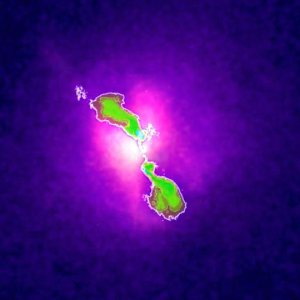
Scientists from the Max-Planck-Institute for Astrophysics successfully detected and measured magnetic turbulence in the central gas of a galaxy cluster. Strengths and lengths of the magnetic eddies support novel theories about the highly complex life within the hearts of clusters of galaxies, where gas and a massive Black Hole cyclically exchange matter and energy.
Intergalactic Weather Station Reports Shock Wave
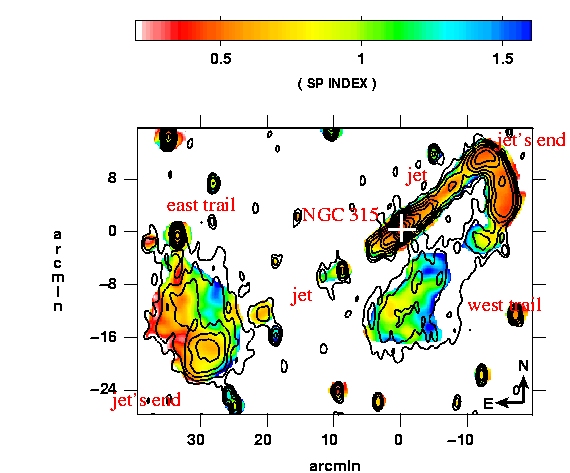
A giant shock wave - of a size yet only observed in clusters of galaxies - was for the first time revealed by researchers of the Max-Planck Society to be located within a filament of galaxies. The crucial hint given to the international team, which is lead by the Max-Planck-Institute for Astrophysics (Garching) and for Radioastronomy (Bonn), came from an unusually formed radio galaxy. This galaxy was recently studied in great detail by radio observations at several frequencies. Radio galaxies eject large amounts of radio emitting gas, which can exhibit a multitude of morphologies. These morphologies are shaped by the external `weather conditions' in a similar way as trails of smoke are shaped in the terrestrial atmosphere. Therefore radio galaxies can be used as `weather stations'. In the presented work the unusual shaped plumes of radio gas from the radio galaxy NGC 315 is serving as such a weather station in the several hundred lightyears long Pisces-Perseus filament of galaxies.
Protons with Horsepowers: On the Traces of the Universe's Highest Energy Particles
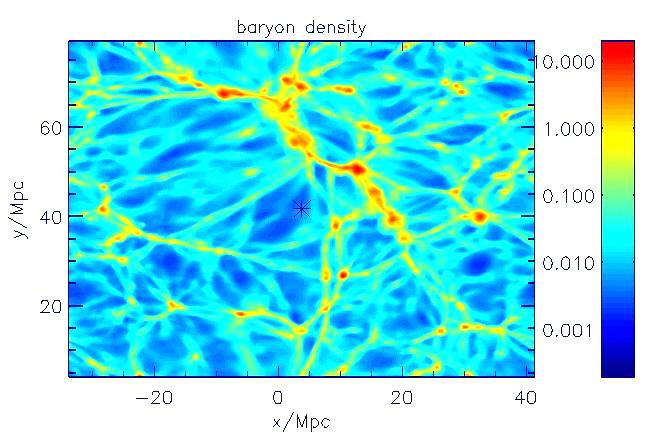
An experienced observer gazing at the night-sky for decades, could probably witness with naked eyes something that only powerful electron microscopes are able to reveal: a single proton in action. With some care, he could observe the characteristic flashes caused by the most energetic particles in the Universe as they hit the Earth's atmosphere. The observer would need to be patient, as these particles are very rare. Computer simulations ndertaken at the Max-Planck-Institute for Astrophysics in Garching have tested several scenarios proposed for the mysterious origin of these remarkable particles. The results: The trajectories of the exotic particles can be reproduced without exotic explanations. In addition, the particles probably come from sources that are distributed in a similar fashion to cosmic matter in extragalactic space. Thus they could originate from neighbouring galaxies.
Glowing in the Cold - New Theory for Mysterious Shining in Clusters of Galaxies
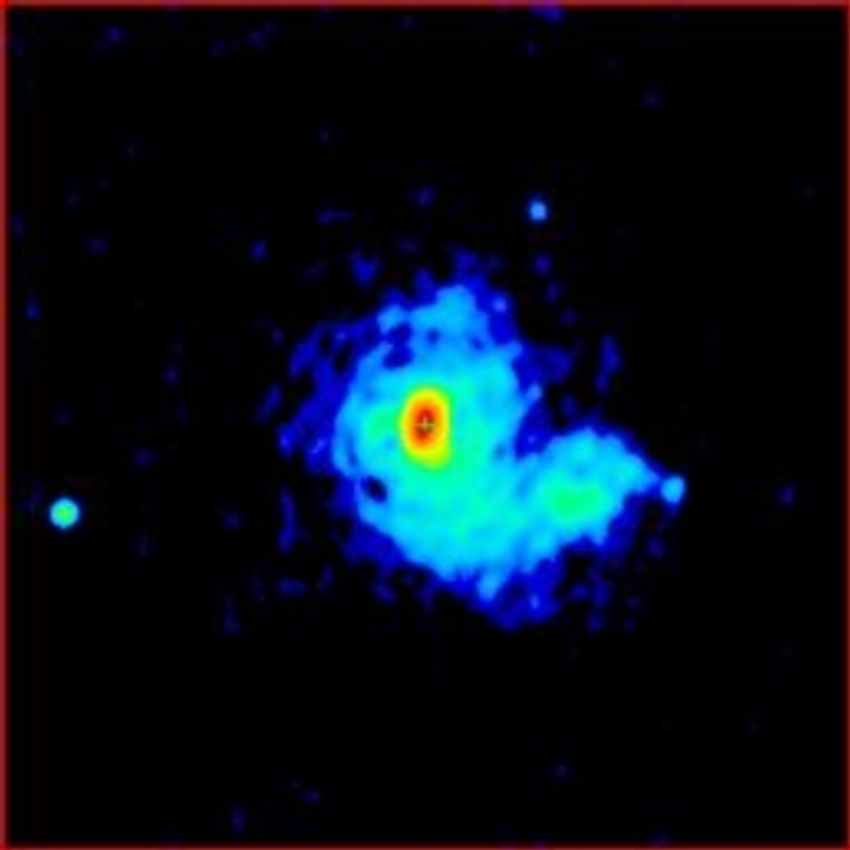
Scientists at the Max-Planck-Institute for Astrophysics have proposed a new explanation for the radio emission from cold cores within the centers of galaxy clusters. High-energy reactions of protons travelling approximately with the speed of light (cosmic ray protons) which interact with the dense gas in the cluster centers are proposed to be responsible for the emission. These reactions produce electrons that shine in the radio band. Simultaneously produced gamma ray emission should be detectable with future telescopes and thus serves as a test for the proposed scenario.